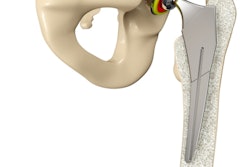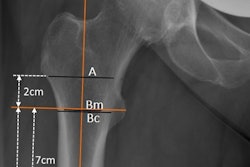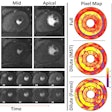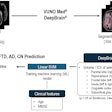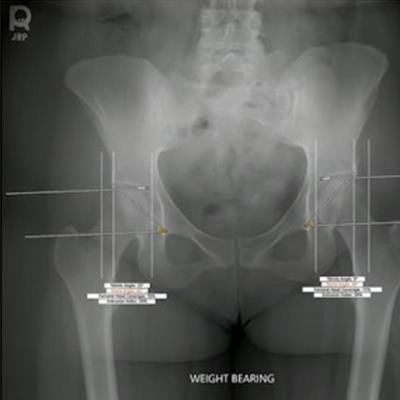
An artificial intelligence (AI) algorithm can save clinicians significant time when assessing patients for hip dysplasia, according to a study presented at the American Roentgen Ray Society (ARRS) annual meeting in Honolulu.
A team at the University of Texas Southwestern Medical Center in Dallas tested a commercially available algorithm called IB Lab Hippo (ImageBiopsy Lab, Austria) on preoperative x-rays of 130 patients with hip dysplasia. The group found the software calculated important x-ray measurements significantly faster than expert readers.
"The AI algorithm was around 70% to 94% faster than the readers, depending on the reader and image," said presenter and medical student Holden Archer.
Hip dysplasia is a developmental condition in which the acetabulum doesn't sufficiently cover the femoral head. Timely detection and surgical correction have been shown to improve pain, functional status, and hip longevity in patients.
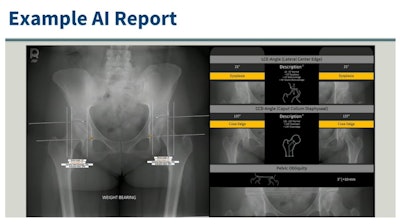 An example report generated by the AI algorithm IB Lab Hippo for each x-ray used in the study. Image courtesy of Holden Archer.
An example report generated by the AI algorithm IB Lab Hippo for each x-ray used in the study. Image courtesy of Holden Archer.However, several time-consuming and complex x-ray measurements are needed to confirm hip dysplasia. In this study, the researchers evaluated the algorithm's ability to automatically locate hip dysplasia landmarks on anteroposterior (AP) pelvis x-rays and perform these measurements compared to three expert readers.
The dataset included radiographs of 256 hips from 130 patients with confirmed preoperative hip dysplasia. Of these patients, 82% were women. The median age for all patients was 29 years old. For the evaluation, the researchers included six key measurements and corresponding imaging landmarks for diagnosing the condition.
"As is predicted for this type of study, the AI was substantially faster than the manual readers," Archer noted.
| Median reading times for radiographing assessment of patients with hip dysplasia | ||||
| Reader 1 | Reader 2 | Reader 3 | AI | |
| Median reading times | 212 seconds | 131 seconds | 734 seconds | 41 seconds |
On average, for a given patient, these times were between 70% and 94% faster for the AI algorithm, Holden said.
"This study demonstrated that this AI-based software was associated with substantial time savings in radiographic assessments of patients with hip dysplasia," Archer said.
Ultimately, in addition to saving time, the algorithm could be useful for providing preliminary measurements to physicians in places without access to board-certified radiologists or orthopedic surgeons to conduct the measurements, he noted.
"Future studies should compare AI measurements with patient-reported outcomes, clinical symptoms, hip function scores, and intraoperative findings of labrum and cartilage damage," Archer concluded.






